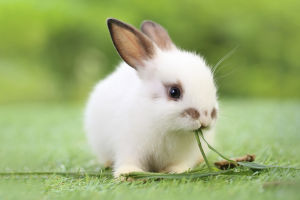Hummingbirds are renowned for their remarkable flying abilities, particularly their capacity to hover, a skill that has fascinated scientists and bird enthusiasts alike for decades.
This extraordinary feat captivates observers and has spurred considerable scientific investigation into the intricate mechanisms behind it.
The ability of hummingbirds to hover is a result of their distinct wing structure, specialized flight mechanics, and unique physiological traits.
Firstly, the wing structure and movement of hummingbirds are crucial to their hovering capability. Unlike most birds, hummingbirds have evolved a unique wing structure that allows for a highly specialized "figure-eight" motion.
This motion enables their wings to rotate freely across a broad range of angles. Rather than simply swinging up and down as in other bird species, hummingbird wings can rotate both forward and backward. This rotational movement is central to their hovering ability.
The continuous flow of lift generated by this wing rotation stabilizes the bird in mid-air, allowing it to remain suspended with remarkable precision. This sophisticated wing mechanism provides hummingbirds with the stability and control necessary for hovering.
Secondly, the flight mechanics of hummingbirds are highly specialized to support their hovering flight. To maintain a stationary position in the air, hummingbirds must generate sufficient lift with each wing stroke.
They achieve this by flapping their wings at an astonishing rate, up to 80 times per second. This rapid wing movement is essential for producing the lift required to sustain hovering.
In addition to their impressive wingbeat frequency, hummingbirds exhibit a remarkable ability to adjust the angle and strength of their wing strokes in response to varying flight conditions. This adaptability allows them to maintain stability while hovering, even in the face of strong winds or other environmental disturbances.
The size and metabolic rate of hummingbirds also play a critical role in their hovering abilities. Their small and lightweight bodies significantly reduce the amount of lift required to stay airborne.
This lightweight physique, combined with their exceptionally high metabolic rate, necessitates a constant intake of food to replenish the energy expended during flight.
Hummingbirds typically consume about 1.5 to 2 times their body weight in food daily, primarily nectar and small insects. This high metabolic rate, coupled with their frequent feeding behavior, provides the continuous energy needed to sustain their hovering flight.
Moreover, the ability of hummingbirds to hover is closely linked to their foraging behavior. Hummingbirds predominantly feed on nectar, and the ability to hover allows them to access this food source efficiently.
By hovering, they can extract nectar from flowers with minimal need for repositioning. This efficient foraging strategy not only optimizes their energy intake but also enables them to move swiftly between flowers, maximizing their feeding efficiency.
The precision and effectiveness of their hovering capability are therefore integral to their survival and reproductive success.
The extraordinary flight skills of hummingbirds are a testament to the marvels of natural adaptation and evolutionary refinement. This intricate interplay of physiological traits and behavioral strategies highlights the hummingbird’s status as one of nature's most exceptional aviators.


